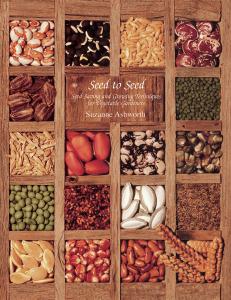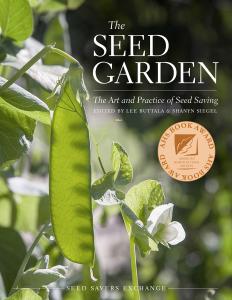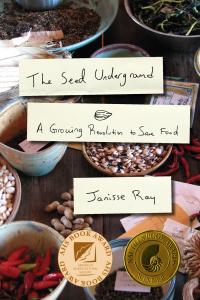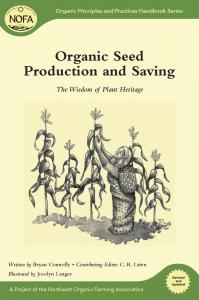Aspiring gardeners should familiarize themselves with seed germination tests to ensure a successful garden. These tests help determine the viability and vigor of seeds before planting, which can help predict their performance in soil. By understanding the results of these tests, gardeners can make informed decisions about their seed selection and maximize their chances of a thriving garden.
There are various tests to evaluate the quality of seeds. Some of the most common tests include cold germination, accelerated aging test, and the paper towel test (also known as warm germination test). Home gardeners can easily perform these tests to assess their seeds. Seed professionals use a variety of tests to predict seed performance under different environmental conditions. However, the warm germination test is usually the one you’ll find on seed labels due to legal requirements.
As a gardener, it is crucial to understand the importance of seed testing. No one wants to spend time and effort nurturing plants only to be disappointed by poor seed performance. Seed testing is also beneficial when you harvest your own seeds. It lets you see how well they were processed, giving feedback to improve your collection practice. With this knowledge, you can choose the best seeds for planting and understand how they might behave in different growing conditions. Ultimately, this leads to a more robust garden.
We will focus on the paper towel germination method in the upcoming sections. This method is simple and can be done at home, and it also serves as a dependable indication of your seeds’ growth potential. By the end of this guide, you will be able to confidently conduct this test, interpret the results, and use this knowledge to cultivate a flourishing garden.
The Paper Towel Germination Method
If you want to check the viability of your seeds before planting them, you can use the paper towel method. Home gardeners widely use this technique because it is simple and provides valuable insights into what you can expect when you plant the seeds in the garden bed.
It is important to note that the paper towel germination test is an approximate number, and the actual germination rate may be either higher or lower. It is ideal to test a sample size of 100 seeds or more, but if you test with ten seeds, you can estimate the germination rate to the nearest 10%. If you test with twenty seeds, you can have a more reliable estimate to the nearest 5%.
To test the viability of seeds before planting, you can follow this method: Spread 100 seeds on a moist paper towel, fold it over, and slide it into a plastic bag. Then, place the bag in a warm but not hot area for around ten days. It is essential to control the moisture levels to prevent mold and ensure the seeds do not dry out.
After ten days, count the sprouted seeds and divide by the total used. A good germination rate indicates the seeds have been stored correctly and will likely thrive under optimal growing conditions. However, a high germination rate does not guarantee success in soil. It is simply a clue.
If fewer seeds germinate, don’t give up on them. It could indicate the need for more controlled soil conditions or a little patience with those slow starters. For the meticulous gardener, a second test can confirm initial findings or showcase a batch’s inconsistency.
After you have recorded the results of your seed germination experiment, you can transplant the sprouted seeds onto a growing medium to give them a proper start in their growth journey. Carefully place the germinated seeds on the soil’s surface in a seedling container, using tweezers to avoid damaging them. Lightly cover the seeds with a dry mix and mist them with a spray bottle to keep them hydrated without disturbing them. Place the container under grow lights to ensure your sprouts receive the warmth and light they need to thrive. This method will provide a nurturing environment for the delicate sprouts, giving them a strong foundation for healthy growth.
Using the paper towel method, you can identify the best seeds and give your garden a head start. This practical step elevates gardening from hopeful to strategic and saves time and resources.
"Here's a little transparency: Our website contains affiliate links. This means we may receive a small commission if you click and make a purchase. Don't worry; there's no extra cost for you. It's a simple way you can support our mission to bring you quality content."
Specialized Germination Tests and Their Insights
In addition to the common paper towel method, I would like to introduce two specialized germination tests that can provide insightful information regarding the viability of your seeds. These tests are not ordinary and offer a deeper understanding of how your seeds may perform under stressful conditions.
Cold Germination Test
The cold germination test is something I hold dear. It's not just any test; it tells a story about the endurance of seeds. Gardeners use it to imitate the conditions of early spring. They plant seeds in a chilled medium at a temperature of 50 F for a week. It might sound too cold, but it reveals which seeds can withstand the cold and still say, "I will grow!". After the week at low temperatures, the seeds are moved to a warm environment to encourage growth. A high survival rate indicates that the seed batch is ready to face the unpredictable chills of early spring planting.
Accelerated Aging Test
One of the tests used to evaluate the quality of seeds is the accelerated aging test. It is often called a "time machine" for seeds because it accelerates the aging process, allowing researchers to study how well the seeds will hold up over time. We mimic the natural aging by subjecting seeds to high humidity and temperature for a few days. Once they endure this stress test, seeds are grown in normal conditions to see which ones still possess the vigor of youth. It's like sending our seeds through boot camp - if they come out on the other side sprouting, they're ready for whatever the season throws at them.
Although not all gardeners may need to conduct a cold germination or accelerated aging test, these tests can be valuable tools for those looking to push the boundaries of their gardening skills. Knowing that your seeds are capable of withstanding such trials can give you the confidence to invest in a garden that is not only beautiful but also resilient.
Please read my post on The Essential Guide To Heirloom Plant Care And Propagation for a more holistic view.
Interpreting Germination Test Results and Next Steps
Germination tests provide valuable feedback for gardeners who save their own seeds. Interpreting the results is crucial to determine the quality of the seeds and guide future seed-saving practices. High germination rates suggest healthy and viable seeds that are likely to grow successfully in the garden. Conversely, lower rates indicate a need to review how you store the seeds or adjust soil conditions for better success. This feedback loop refines your gardening techniques and improves your seed quality.
Germination tests also offer an excellent opportunity to learn more about seed quality, environmental factors affecting seeds, and how to become a more successful gardener. High germination rates validate your seed-saving methods, indicating that you are ready for a successful season. However, consistently low rates might prompt you to consult with seed experts or select different seed varieties to improve your seed-saving strategy for better outcomes.
Conducting germination tests is a learning journey that sharpens your horticultural know-how. Take these tests as an opportunity to enhance your gardening skills and cultivate a garden full of life.






Your point of view caught my eye and was very interesting. Thanks. I have a question for you.
Thank you for sharing your thoughts after reading the article. To help us improve and ensure the content aligns with its title, could you elaborate on any specific concerns or questions you had?
Your feedback is important to us, and we want to ensure our articles are clear, informative, and meet our readers’ expectations. We’re always looking for ways to enhance our content and better serve our audience.
We appreciate you engaging with our blog and look forward to hearing more from you. Your input will help us address any issues and make the article more comprehensive and accurate.